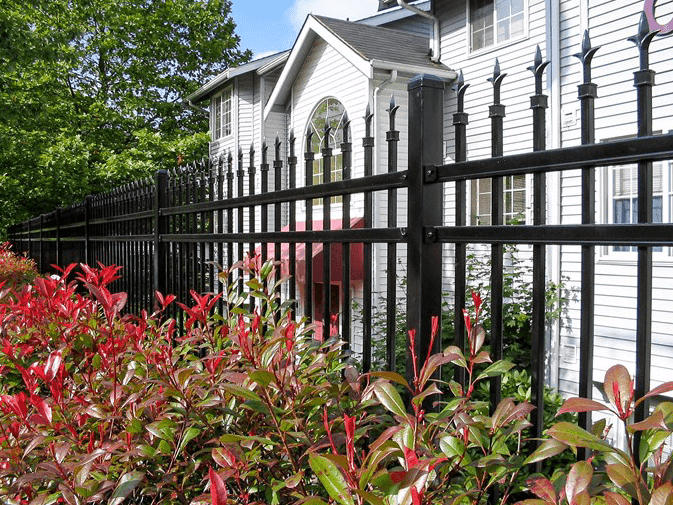In this article, you’ll learn everything you need to know about fences and their role in home security. We’ll delve into the different types, sizes, shapes, and materials used in fences, as well as their suitability for specific needs. We’ll discuss the characteristics and advantages of various fence types, including wooden fences, chain-link fences, vinyl fences, and metal fences. We’ll also explore their durability, maintenance requirements, and aesthetic appeal. Additionally, we’ll address the importance of choosing the right size and shape of a fence based on your requirements. By the end, you’ll have valuable knowledge and practical advice to make informed decisions when selecting and installing fences for your home.
At the end of each post, we’ll address the most common questions people have about fences, providing you with 10 question and answer pairs to further enhance your understanding of the topic. We’ll also include a handy table format that covers the different types of fences, summarizing their key features.
Fences and Home Security: What You Need to Know
When it comes to home security, one of the most effective and versatile solutions is a fence. Not only does it provide a physical barrier to keep unwanted intruders out, but it also offers a range of other benefits, such as enhancing privacy, enclosing a backyard, and adding aesthetic appeal to your property. In this article, we will explore the different types of fences available, their advantages and considerations, how to determine their suitability for specific needs, and tips on installation, maintenance, and repairs.
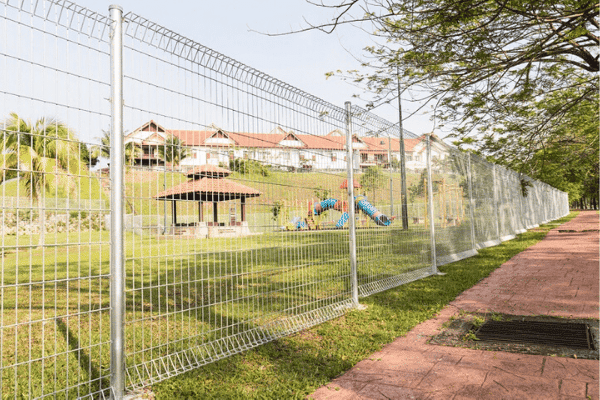
Types of Fences
Wooden Fences
Wooden fences are a popular choice for their natural and rustic appearance. They can be constructed from various types of wood, such as cedar, pine, or redwood, each offering its own unique characteristics. Wooden fences can range from simple picket fences to more elaborate designs, providing both security and an aesthetically pleasing addition to your property.
Chain-Link Fences
Chain-link fences are known for their affordability and durability. They are typically made of galvanized steel and consist of interlocking wire mesh. While they may not offer as much privacy as other fence types, they are highly effective for securing a property, especially when combined with additional security measures such as barbed wire or privacy slats.
Vinyl Fences
Vinyl fences have gained popularity in recent years due to their low maintenance requirements and versatility. They are available in a variety of styles and colors, offering the look of traditional wood fences without the maintenance concerns, such as rotting or termite damage. Vinyl fences are also resistant to fading and can withstand harsh weather conditions.
Metal Fences
Metal fences, often made of aluminum or steel, are known for their strength and durability. They are a great option for those seeking high levels of security and protection. Metal fences can be designed in various styles, such as ornamental iron or chain-link with added security features. They require little maintenance and can last for many years with proper care.
Composite Fences
Composite fences are a relatively new option in the market, offering a combination of wood fibers and recycled plastic. They resemble wood fences but boast superior durability and resistance to rot, warping, and insect damage. Composite fences are also eco-friendly and require minimal maintenance, making them an attractive choice for homeowners.
Advantages and Considerations
Durability
When choosing a fence, durability is a crucial factor to consider. Wooden fences, for instance, may require regular maintenance to prevent rotting or warping. On the other hand, chain-link, vinyl, metal, and composite fences are more resistant to the elements and require minimal upkeep, making them long-lasting options.
Maintenance Requirements
Another aspect to consider is the maintenance requirements of different fence types. Vinyl and metal fences typically require little to no maintenance, while wooden fences may need regular staining or sealing. Composite fences, once installed, often only require occasional cleaning to maintain their appearance.
Aesthetic Appeal
The aesthetic appeal of a fence is an important consideration for many homeowners. Wooden fences offer a natural and timeless look, while vinyl, metal, and composite fences can be designed to mimic the appearance of wood or offer modern and contemporary styles. Choose a fence that complements the architectural design of your home and reflects your personal taste.
Cost
Cost is often a determining factor in choosing a fence. Wooden fences are generally more affordable upfront, but their maintenance requirements may result in higher long-term costs. Vinyl and metal fences tend to have higher initial costs but require minimal maintenance over time. Composite fences fall in the mid-range in terms of cost, offering a balance between durability and aesthetics.
Determining Fence Suitability
Enhancing Privacy
If privacy is a top concern, consider fence types that provide a high level of privacy, such as wooden fences or vinyl fences with privacy slats. These fences minimize visibility and create a secluded space in your yard.
Ensuring Security
For heightened security, metal fences with added security features, such as ornamental iron with spear tops or chain-link topped with barbed wire, are effective options. Ensure that the chosen fence type is tall enough and robust to deter potential intruders.
Enclosing a Backyard
If your main goal is to enclose your backyard for children or pets, chain-link fences, vinyl fences, or composite fences can offer a secure boundary while still allowing visibility. Choose a fence height that suits your needs and complies with local regulations.
Adding Decorative Elements
If you want to enhance the aesthetic appeal of your property, consider ornamental metal fences or wooden fences with decorative details. These fences can add character and charm to your home while still providing security and privacy.
Choosing the Right Size and Shape
Property Size
Consider the size of your property when choosing a fence. Larger properties may require longer fence stretches or multiple sections, while smaller properties may only need a shorter fence enclosure. Carefully measure the perimeter of your property to determine the appropriate size.
Desired Level of Enclosure
Think about how enclosed you want your property to be. A tall fence with minimal gaps between the pickets or panels offers more privacy and security, while a lower fence may be more suitable for decorative purposes or to maintain a view of the surroundings.
Architectural Considerations
Take into account the architectural style of your home and the surrounding landscape. Choose a fence that complements the overall aesthetic, whether it be a traditional picket fence for a cottage-style home or a sleek modern fence for a contemporary property.
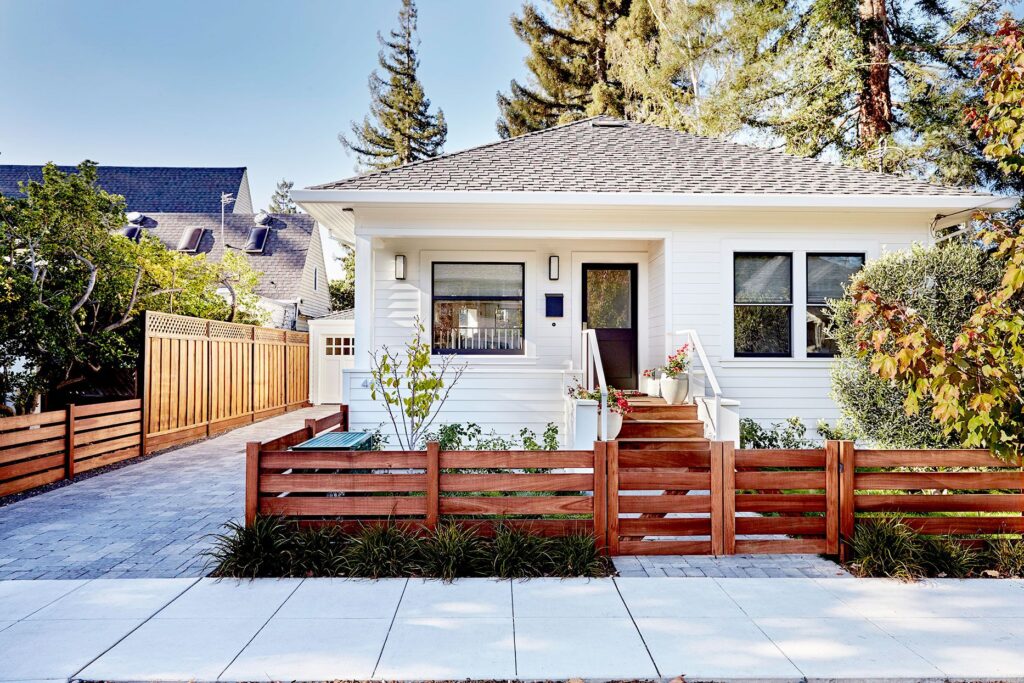
Wooden Fences
Types of Wood
Different types of wood have varying characteristics and appearances. Cedar is a popular choice due to its natural resistance to rot and insect infestation. Pine is also commonly used for its affordability, while redwood offers a beautiful and long-lasting option.
Pros and Cons
Wooden fences offer a timeless and warm look, adding value and curb appeal to your property. They can be customized to fit your specific design preferences. However, wooden fences require regular maintenance, such as staining or sealing, to prevent weathering and decay.
Maintenance Tips
To keep your wooden fence in optimal condition, regularly inspect it for any signs of damage, such as loose boards or rotting wood. Clean the fence annually and apply a protective sealant or stain as recommended by the manufacturer. Trim any vegetation near the fence to prevent moisture buildup and potential damage.
Chain-Link Fences
Installation Process
Installing a chain-link fence involves setting posts into the ground, attaching the mesh fabric, and adding additional components such as tension wire or top rail. The process can be relatively straightforward, but it is recommended to hire a professional for best results.
Benefits and Drawbacks
Chain-link fences are known for their affordability, durability, and low maintenance requirements. They are highly effective for containing pets or creating a secure enclosure. However, they may not provide much privacy, and some homeowners may find the appearance less appealing compared to other fence types.
Usage and Applications
Chain-link fences are commonly used for residential properties, commercial buildings, and recreational areas. They are an excellent option for securing large areas without obstructing visibility, making them suitable for dog runs, sports fields, or industrial lots.
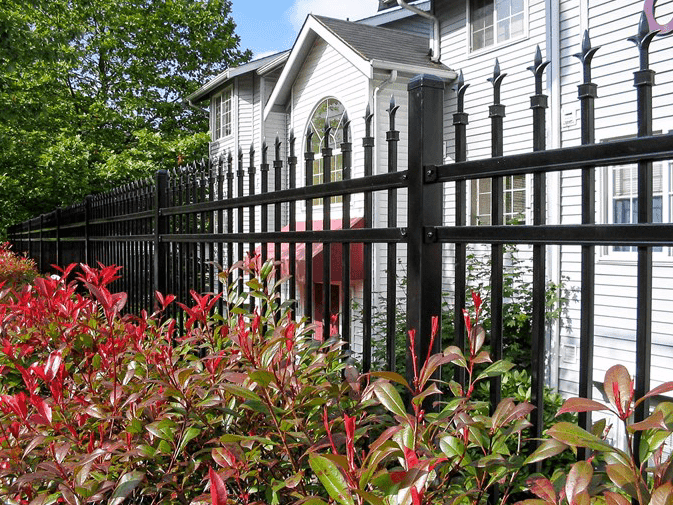
Vinyl Fences
Appearance and Design Options
Vinyl fences come in a variety of styles, including privacy fences, picket fences, and ornamental fences. They can be customized with different colors and textures, mimicking the appearance of wood or creating a modern and sleek design.
Longevity and Durability
Vinyl fences are known for their longevity and durability. They are resistant to rot, moisture, fading, and insect damage. Vinyl fences can withstand harsh weather conditions, making them ideal for areas with extreme temperature fluctuations.
Maintenance and Repairs
Vinyl fences require minimal maintenance, usually limited to occasional cleaning using a mild detergent and water. In the event of damage, such as a cracked or broken panel, repairs can be made by replacing the affected section without requiring extensive repairs or replacements.
Metal Fences
Different Metals
Metal fences can be made of various materials, such as aluminum or steel. Aluminum fences are lightweight, resistant to rust, and suitable for decorative purposes. Steel fences are stronger and more durable, making them an excellent choice for security-focused applications.
Rust Prevention and Maintenance
To prevent rust on metal fences, it is important to choose materials that are either naturally resistant to rust or treated with a protective coating. Regular maintenance involves inspecting for any signs of rust or damage and promptly addressing them with touch-up paint or rust inhibitors.
Security Features
Metal fences can be equipped with additional security features, such as ornamental spikes, pickets, or security gates. These features serve as visual deterrents and help reinforce the security of your property.
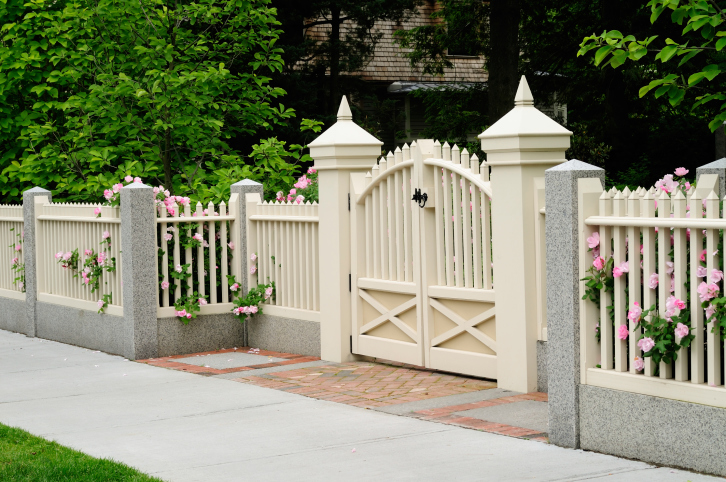
Composite Fences
Composition and Construction
Composite fences are typically made of a combination of wood fibers and recycled plastic. This mixture creates a strong and durable material that closely resembles wood. Composite fences are available in different designs and colors, offering versatility and style options.
Eco-Friendly Options
Composite fences are considered eco-friendly as they are made from recycled materials. They do not require the harvesting of natural resources like traditional wooden fences. Additionally, composite fences have a longer lifespan than wood, reducing the need for replacements.
Long-Term Durability
Composite fences are highly durable and resistant to decay, warping, and insect damage. They require minimal maintenance, usually limited to occasional cleaning to remove dirt and debris. Composite fences offer the aesthetic appeal of wood with the added benefit of longevity.
Factors to Consider When Choosing a Fence
Budget
Before selecting a fence, determine your budget to ensure that it aligns with the type, size, and materials you desire. Consider both the initial cost of the fence and any potential long-term maintenance expenses.
Climate and Environment
Take into account the climate and environment of your area. Certain fence materials may be more suitable for extreme weather conditions, such as vinyl or metal fences for areas with high humidity or wooden fences treated for resistance to rot and insect infestation.
Neighbors and Community Regulations
Check with your neighbors and local community regulations to ensure that the chosen fence complies with any height or design restrictions. It is important to be considerate of your neighbors’ views and maintain harmonious relationships within the community.

Common Fence Installation Mistakes and How to Avoid Them
Improper Measurement
One common mistake during fence installation is inaccurate measurements, resulting in misaligned posts or uneven sections. Take precise measurements and mark out the fence line before starting the installation process.
Lack of Proper Permits
Failing to obtain the necessary permits for fence installation can lead to legal issues and potential fines. Check with your local authorities to determine if any permits or permissions are required before starting the installation.
Inadequate Post Support
Insufficient post support can result in a fence that becomes unstable over time. Ensure that the posts are set deep enough in the ground and secured properly with concrete or gravel to maintain the stability of the fence.
Maintaining and Repairing Fences
Cleaning and Washing Techniques
Regular cleaning is essential to keep your fence looking its best. Use a mild detergent and water solution to remove dirt, stains, and mildew. Be cautious not to use abrasive cleaners or tools that can damage the fence’s surface.
Repairing Damaged Sections
Inspect your fence regularly for any signs of damage, such as loose panels, broken pickets, or damaged post caps. Repair these sections promptly to prevent further damage and to maintain the integrity of the fence.
Replacing Broken Components
In the event of severe damage or wear, it may be necessary to replace certain components of the fence, such as individual pickets or panels. Contact a professional or refer to the manufacturer’s guidelines for guidance on replacement procedures.
Enhancing Privacy with Fences
Privacy Fence Design Ideas
To enhance privacy with a fence, consider options that minimize visibility, such as solid wooden fences or vinyl fences with privacy slats. Alternatively, you can incorporate landscaping elements, such as tall shrubs or trees, to create a natural privacy barrier.
Additional Privacy Measures
In addition to a fence, there are other measures you can take to enhance privacy in your yard. These include installing outdoor blinds or shades, planting dense vines or climbing plants along the fence, or adding trellises or lattice panels for added coverage.
Creating Sound Barriers
Certain fence types, such as composite fences or solid wooden fences, can serve as effective sound barriers, reducing noise from neighboring properties or busy streets. The density and design of the fence play a significant role in its soundproofing capabilities.
Conclusion
When it comes to home security and privacy, a fence can serve as a valuable asset. By choosing the right fence type, size, and material, you can enhance the security, privacy, and aesthetic appeal of your property. Consider factors such as durability, maintenance requirements, and suitability for specific purposes when making your decision. Remember to measure accurately, obtain any necessary permits, and properly maintain and repair your fence to ensure its longevity and effectiveness. With the right fence in place, you can create a safe and secure environment for you and your family to enjoy.
Questions and Answers:
-
What are the advantages of wooden fences?
- Wooden fences offer a natural and rustic appearance, adding aesthetic appeal to your property. They can be customized to fit your preferences and offer a timeless look.
-
How durable are chain-link fences?
- Chain-link fences are known for their durability. They are made of galvanized steel and can withstand harsh weather conditions and external forces.
-
Are vinyl fences low maintenance?
- Yes, vinyl fences require minimal maintenance. They do not need staining or sealing like wooden fences and can be easily cleaned with water and mild detergent.
-
What are the common metal options for fences?
- Common metal options for fences include aluminum and steel. Aluminum fences are lightweight and resistant to rust, while steel fences offer strength and durability.
-
Are composite fences environmentally friendly?
- Yes, composite fences are considered eco-friendly as they are made from recycled materials. They also have a longer lifespan compared to wood, reducing the need for replacements.
-
How do I choose the right size and shape for my fence?
- Consider factors such as the size of your property, desired level of enclosure, and architectural design of your home when choosing the size and shape of your fence.
-
What are the maintenance requirements for wooden fences?
- Wooden fences require regular maintenance, such as staining or sealing, to prevent rotting or warping. They should be inspected for any signs of damage and cleaned periodically.
-
Can chain-link fences provide privacy?
- Chain-link fences do not offer a high level of privacy as they have gaps in the mesh fabric. However, they can be combined with privacy slats or additional vegetation for increased privacy.
-
How can I prevent rust on metal fences?
- To prevent rust on metal fences, choose materials that are rust-resistant or treated with a protective coating. Regular inspections and maintenance, such as touch-up paint, can also help prevent rust.
-
How do I enhance privacy with a fence?
- To enhance privacy with a fence, choose options that minimize visibility, such as solid wooden fences or vinyl fences with privacy slats. You can also incorporate landscaping elements or additional privacy measures for added coverage.
